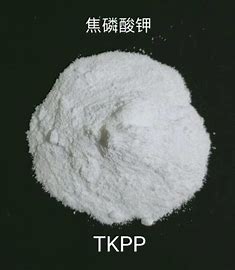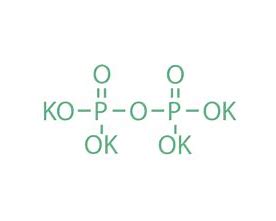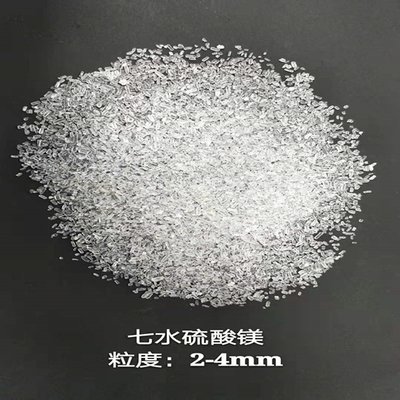Hydrazine hydrate/NaHSO3 MSDS
Safety Data Sheet for Hydrazine
1. Identification
1.1 GHS Product identifier
The product name is hydrazine.
1.2 Other means of identification
Other names for this product include Hydrazine hydrate, aqueous solutions; HYDRAZINE HYDRATE 55; Hydrazine hydrate, extra pure.
1.3 Recommended use of the chemical and restrictions on use
The identified uses of hydrazine are for industrial and scientific research purposes. At present, there is no data available regarding uses that should be avoided.
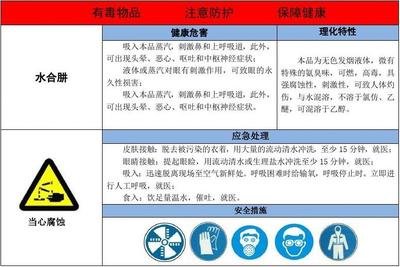
1.4 Supplier’s details
Company: Chongqing Yuhan Technology
1.5 Emergency phone number
The emergency phone number is 13121892008, with service hours from Monday to Friday, 9 am – 5 pm (Standard time zone: UTC/GMT +8 hours).
2. Hazard identification
2.1 Classification of the substance or mixture
Hydrazine is not classified under certain general criteria, but it has significant hazards.
2.2 GHS label elements, including precautionary statements
- Pictogram(s): Signal word is “Danger”
- Hazard statement(s):
- H300: Fatal if swallowed
- H311: Toxic in contact with skin
- H314: Causes severe skin burns and eye damage
- H317: May cause an allergic skin reaction
- H330: Fatal if inhaled
- H350: May cause cancer
- H400: Very toxic to aquatic life
- H410: Very toxic to aquatic life with long lasting effects
- Precautionary statement(s): Currently, no specific prevention, response, storage, or disposal precautions are provided in this section.
2.3 Other hazards which do not result in classification
There is no data available regarding other non-classified hazards.
3. Composition/information on ingredients
3.1 Substances
| Chemical name | Common names and synonyms | CAS number | EC number | Concentration |
|---|---|---|---|---|
| hydrazine | hydrazine | 10217-52-4 | 600-285-7 | 100% |
4. First-aid measures
4.1 Description of necessary first-aid measures
- If inhaled: Move the victim to fresh air. If breathing is difficult, provide oxygen. In case of no breathing, perform artificial respiration and consult a doctor immediately. Avoid mouth-to-mouth resuscitation if the victim has ingested or inhaled the chemical.
- Following skin contact: Remove contaminated clothing immediately and wash the affected area with soap and plenty of water. Seek medical advice.
- Following eye contact: Rinse the eyes with pure water for at least 15 minutes and consult a doctor.
- Following ingestion: Rinse the mouth with water. Do not induce vomiting. Never give anything by mouth to an unconscious person. Contact a doctor or Poison Control Center immediately.
4.2 Most important symptoms/effects, acute and delayed
There is no data available regarding the most important acute and delayed symptoms or effects.
4.3 Indication of immediate medical attention and special treatment needed, if necessary
No information is available on specific medical attention or special treatment requirements.
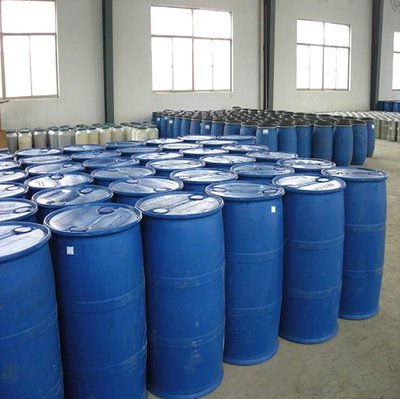
5. Fire-fighting measures
5.1 Suitable extinguishing media
Use dry chemical, carbon dioxide, or alcohol-resistant foam to extinguish fires involving hydrazine.
5.2 Specific hazards arising from the chemical
There is no data available regarding specific fire-related hazards of hydrazine.
5.3 Special protective actions for fire-fighters
Firefighters should wear self-contained breathing apparatus if necessary during firefighting operations.
6. Accidental release measures
6.1 Personal precautions, protective equipment and emergency procedures
Avoid creating dust, breathing mist, gas, or vapors. Prevent contact with skin and eyes by using personal protective equipment, such as chemical impermeable gloves. Ensure good ventilation, remove all ignition sources, and evacuate people to safe areas. Keep individuals away from and upwind of the spill or leak site.
6.2 Environmental precautions
If it is safe to do so, prevent further spillage or leakage. Do not allow the chemical to enter drains, and avoid discharging it into the environment.
6.3 Methods and materials for containment and cleaning up
Collect the spilled hydrazine and arrange for proper disposal. Store the chemical in suitable, closed containers for disposal. Remove all ignition sources and use spark-proof tools and explosion-proof equipment. Dispose of adhered or collected material promptly in accordance with relevant laws and regulations.
7. Handling and storage
7.1 Precautions for safe handling
Handle hydrazine in a well-ventilated area. Wear appropriate protective clothing. Avoid skin and eye contact. Prevent the formation of dust and aerosols, use non-sparking tools, and take measures to prevent fires caused by electrostatic discharge.
7.2 Conditions for safe storage, including any incompatibilities
Store the container tightly closed in a dry, cool, and well-ventilated place. Keep it away from foodstuff containers and incompatible materials.
8. Exposure controls/personal protection
8.1 Control parameters
- Occupational Exposure limit values: No data available
- Biological limit values: No data available
8.2 Appropriate engineering controls
Ensure adequate ventilation, handle the chemical following good industrial hygiene and safety practices, and set up emergency exits and risk-elimination areas.
8.3 Individual protection measures, such as personal protective equipment (PPE)
- Eye/face protection: Wear tightly fitting safety goggles with side-shields conforming to EN 166(EU) or NIOSH (US) standards.
- Skin protection: Wear fire/flame-resistant and impervious clothing and handle with gloves. Gloves should be inspected before use, and hands should be washed and dried. The selected gloves must meet the specifications of EU Directive 89/686/EEC and the standard EN 374 derived from it.
- Respiratory protection: Use a full-face respirator if exposure limits are exceeded or if irritation or other symptoms occur.
- Thermal hazards: No data available
9. Physical and chemical properties and safety characteristics
| Property | Details |
|---|---|
| Physical state | Colorless |
| Melting point/freezing point | -57°C |
| Boiling point or initial boiling point and boiling range | 117°C |
| Flash point | 91°C |
| Solubility | Miscible in water |
| Vapour pressure | 5 mm Hg ( 25 °C) |
| Density and/or relative density | 1.027 |
| Relative vapour density | >1 (vs air) |
There is no data available for many other properties such as color, odor, flammability, explosion limits, auto-ignition temperature, decomposition temperature, pH, kinematic viscosity, partition coefficient n-octanol/water, and particle characteristics.
10. Stability and reactivity
10.1 Reactivity
No data available.
10.2 Chemical stability
No data available.
10.3 Possibility of hazardous reactions
No data available.
10.4 Conditions to avoid
No data available.
10.5 Incompatible materials
No data available.
10.6 Hazardous decomposition products
No data available.
11. Toxicological information
There is currently no data available for various toxicological aspects of hydrazine, including acute toxicity (oral, inhalation, dermal), skin corrosion/irritation, serious eye damage/irritation, respiratory or skin sensitization, germ cell mutagenicity, carcinogenicity, reproductive toxicity, STOT-single exposure, STOT-repeated exposure, and aspiration hazard.
12. Ecological information
12.1 Toxicity
There is no data available regarding the toxicity of hydrazine to fish, daphnia and other aquatic invertebrates, algae, and microorganisms.
13. Disposal considerations
13.1 Disposal methods
- Product: The material can be disposed of by transporting it to a licensed chemical destruction plant or through controlled incineration with flue gas scrubbing. Do not contaminate water, foodstuffs, feed, or seed during storage or disposal, and do not discharge it into sewer systems.
- Contaminated packaging: Containers can be rinsed three times (or equivalent) and then offered for recycling or reconditioning. Alternatively, puncture the packaging to render it unusable for other purposes and dispose of it in a sanitary landfill. Combustible packaging materials can be disposed of through controlled incineration with flue gas scrubbing.
14. Transport information
14.1 UN Number
ADR/RID: UN2030 (For reference only, please check.)
IMDG: UN2030 (For reference only, please check.)
IATA: UN2030 (For reference only, please check.)
14.2 UN Proper Shipping Name
ADR/RID: HYDRAZINE AQUEOUS SOLUTION with more than 37% hydrazine, by mass (For reference only, please check.)
IMDG: HYDRAZINE AQUEOUS SOLUTION with more than 37% hydrazine, by mass (For reference only, please check.)
IATA: HYDRAZINE AQUEOUS SOLUTION with more than 37% hydrazine, by mass (For reference only, please check.)
14.3 Transport hazard class(es)
ADR/RID: 8 (For reference only, please check.)
IMDG: 8 (For reference only, please check.)
IATA: 8 (For reference only, please check.)
14.4 Packing group, if applicable
ADR/RID: I (For reference only, please check.)
IMDG: I (For reference only, please check.)
IATA: I (For reference only, please check.)
14.5 Environmental hazards
ADR/RID: No
IMDG: No
IATA: No
14.6 Special precautions for user
No data available.
14.7 Transport in bulk according to IMO instruments
No data available.
15. Regulatory information
| Chemical name | Common names and synonyms | CAS number | EC number | Regulatory Status |
|---|---|---|---|---|
| hydrazine | hydrazine | 10217-52-4 | 600-285-7 | Listed in China Catalog of Hazardous chemicals 2015, New Zealand Inventory of Chemicals (NZIoC), Vietnam National Chemical Inventory; Not Listed in European Inventory of Existing Commercial Chemical Substances (EINECS), EC Inventory, United States Toxic Substances Control Act (TSCA) Inventory, Philippines Inventory of Chemicals and Chemical Substances (PICCS), Chinese Chemical Inventory of Existing Chemical Substances (China IECSC), Korea Existing Chemicals List (KECL) |
16. Other information
Information on revision
- Creation Date: July 15, 2019
- Revision Date: July 15, 2019
Abbreviations and acronyms
CAS: Chemical Abstracts Service
ADR: European Agreement concerning the International Carriage of Dangerous Goods by Road
RID: Regulation concerning the International Carriage of Dangerous Goods by Rail
IMDG: International Maritime Dangerous Goods
IATA: International Air Transportation Association
TWA: Time Weighted Average
STEL: Short term exposure limit
LC50: Lethal Concentration 50%
LD50: Lethal Dose 50%
EC50: Effective Concentration 50%
References
- IPCS – The International Chemical Safety Cards (ICSC), website: http://www.ilo.org/dyn/icsc/showcard.home
- HSDB – Hazardous Substances Data Bank, website: https://toxnet.nlm.nih.gov/newtoxnet/hsdb.htm
- IARC – International Agency for Research on Cancer, website: http://www.iarc.fr/
- eChemPortal – The Global Portal to Information on Chemical Substances by OECD, website: http://www.echemportal.org/echemportal/index?pageID=0&request_locale=en
- CAMEO Chemicals, website: http://cameochemicals.noaa.gov/search/simple
- ChemIDplus, website: http://chem.sis.nlm.nih.gov/chemidplus/chemidlite.jsp
- ERG – Emergency Response Guidebook by U.S. Department of Transportation, website: http://www.phmsa.dot.gov/hazmat/library/erg
- Germany GESTIS-database on hazard substance, website: http://www.dguv.de/ifa/gestis/gestis-stoffdatenbank/index-2.jsp

